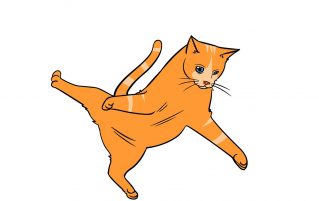

Terminal velocity, as you will learn in your science lessons, is the constant speed a free- falling object reaches, once resistance prevents it accelerating.
If you are travelling at terminal velocity – then you are definitely travelling quickly, at around 120 mph in fact! However, cats fall at around half the speed of humans, with a terminal velocity of around 60 mph. They are also known for landing on their feet when they fall. This lower terminal velocity is one of the reasons cats are able to survive falls from high places. Cats have great instincts, and the vestibular apparatus in their ears enables them to balance themselves.
In other words, they turn themselves round to land on their feet. As they fall at a slower speed than us, they have time to do this. Once they reach terminal velocity, they relax their bodies, and spread their limbs. Basically, they become like a cat parachute – increasing the air resistance and slowing themselves down. Added to that- their paw pads act like shock absorbers. When they land on their feet, the impact is spread throughout the whole body. It is even safer for an ant to fall. They have such a small mass, relative to air resistance, they fall slowly, so make little impact when they land! In fact, falling is a means of them moving around.
If you found this useful and think you would benefit from some additional help, please contact us.
We welcome guest bloggers.
